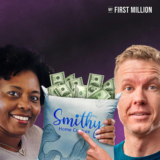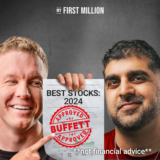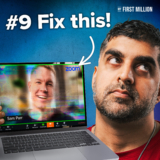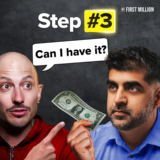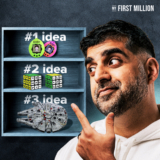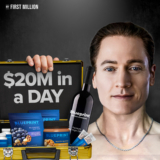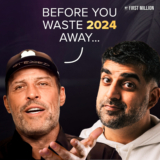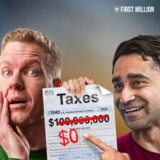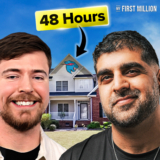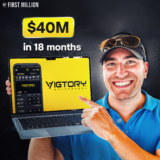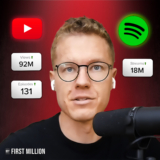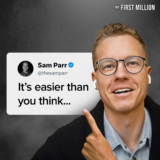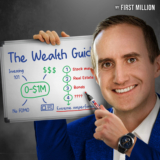Episode 550: Shaan Puri (https://twitter.com/ShaanVP) and Sam Parr (https://twitter.com/theSamParr) tell how Sam’s mother-in-law built a million-dollar Etsy ...
Episode 549: Shaan Puri (https://twitter.com/ShaanVP) and Sam Parr (https://twitter.com/theSamParr) bring you the first annual MFM Stock-a-palooza. Sam and ...
Episode 548: Shaan Puri (https://twitter.com/ShaanVP) and Sam Parr (https://twitter.com/theSamParr) tell you the greek tragedy behind the Pornhub empire. If ...
Episode 547: Shaan Puri (https://twitter.com/ShaanVP) and Sam Parr (https://twitter.com/theSamParr) are dropping 16 career principles that will get you ...
Episode 546: Shaan Puri (https://twitter.com/ShaanVP) and Sam Parr (https://twitter.com/theSamParr) talk to Noah Kagan ( https://twitter.com/noahkagan ) about ...
Episode 545: Shaan Puri (https://twitter.com/ShaanVP) and Sam Parr (https://twitter.com/theSamParr) brainstorm $100M retro business ideas: LEGO for adults, ...
Episode 544: Shaan Puri (https://twitter.com/ShaanVP) and Sam Parr (https://twitter.com/theSamParr) talk about Bryan Johnson’s $2.4M dollar day, Pieter Levels ...
Episode 543: Shaan Puri (https://twitter.com/ShaanVP) and Sam Parr (https://twitter.com/theSamParr) talk to Morning Brew founder Austin Rief ( ...
Episode 542: Shaan Puri (https://twitter.com/ShaanVP) talks to Tony Robbins, the #1 life and performance coach in the world. Tony has built a $7 billion dollar ...
Episode 541: Shaan Puri (https://twitter.com/ShaanVP) and Sam Parr (https://twitter.com/theSamParr) are on a campaign to make sure no entrepreneur pays more ...
Episode 540: Shaan Puri (https://twitter.com/ShaanVP) and Sam Parr (https://twitter.com/theSamParr) are popping open some cold ones and telling you about 8 ...
Episode 539: Shaan Puri (https://twitter.com/ShaanVP) and Sam Parr (https://twitter.com/theSamParr) recap the biggest takeaways from spending the weekend with ...
Episode 538: Sam Parr (https://twitter.com/theSamParr) nerds out on fitness with Nick Bare and Sahil Bloom. They answer listeners questions about training ...
Episode 537: Shaan Puri (https://twitter.com/ShaanVP) and Sam Parr (https://twitter.com/theSamParr) talk about alternative New Year’s resolutions and Sam meets ...
Episode 536: Shaan Puri (https://twitter.com/ShaanVP) and Sam Parr (https://twitter.com/theSamParr) talk to Sam Rattner about selling his first company for ...
Episode 535: Shaan Puri (https://twitter.com/ShaanVP) and Sam Parr (https://twitter.com/theSamParr) look back at 2023 and the nine new philosophies they’ve ...
Episode 534: Shaan Puri (https://twitter.com/ShaanVP) and Sam Parr (https://twitter.com/theSamParr) answer the question, “How did you get your first 100 ...
Episode 533: Shaan Puri (https://twitter.com/ShaanVP) and Sam Parr (https://twitter.com/theSamParr) talk to Morgan Housel about the psychology of building ...
Episode 532: Shaan Puri (https://twitter.com/ShaanVP) and Sam Parr (https://twitter.com/theSamParr) bring you…..Part 2 of The 2023 Milly Awards. Christmas has ...
Episode 531: Shaan Puri (https://twitter.com/ShaanVP) and Sam Parr (https://twitter.com/theSamParr) bring you…..The 2023 Milly Awards. Actors have the Oscars, ...
- « Previous Page
- 1
- …
- 10
- 11
- 12
- 13
- 14
- …
- 41
- Next Page »

